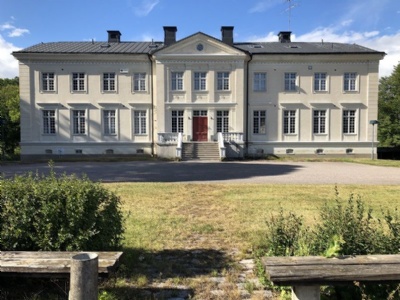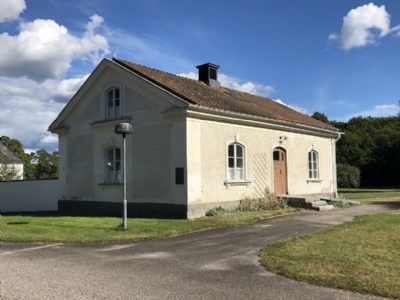Kjesäter Castle
Between April 1940 and May 1945, about 50,000 Norwegian citizens fled to Sweden. After crossing the border, the majority of them were taken into custody by local police, customs officers or military personnel. They were questioned about their escape and other things that could be out interest for the Swedish police or military. If the reasons given were deemed to be valid, they were sent to one of the internment camps that the Swedish government together with the Norwegian exile government had established in Sweden. The largest of these camps was Kjesäter castle just east of Vingåker, Sörmland County. Between mid-June 1942 and the end of the war, no fewer than 42,800 Norwegian refugees ended up in Kjesäter Castle. The castle itself was too small and therefore some thirty barracks were established around the castle.
In Kjesäter the refugees got rest and medical care if needed. They also had to undergo further questioning to find suitibale tasks for them. Subsequently, they were sent to the other locations for either work or education, including police and military training. About 12 – 13,000 refugees were selected for police training, which became the core of the so-called police forces. The initiator of the police forces was the famous Swedish forensic technician, Harry Söderman, better known as Revolver-Harry.
The purpose of the police forces was that after the end of the war they would be sent back to Norway to replace the police officers trained by the Germans and to uphold law and order during the transition phase back to civil society. The Germans, however, kept an eye on the training which, with some right, they considered to be of military nature as it contained weapons training. Something that was not really compatible with Sweden’s stated neutrality policy and international law, as neutral states are not allowed to offer belligerent countries weapons education within the country’s borders.
Current status: Preserved with memorial tablet (2020).
Location: 59° 02' 40.23" N 15° 54' 53.55" E
Get there: Car.
Follow up in books: Gilmour, John: Sweden, the Swastika and Stalin - The Swedish Experience in the Second World War (2011).



In 2020, the castle is part of a residential college for adult education located on the site. On the gable of one of the buildings next to the castle is a memorial plaque set up by Norway in 1997. Of the barracks that were established during the war, none remain, but were probably demolished when the camp was dismantled. The courier activities that took place during the war are quite well known, but this part of history and above all the large number of refugees is probably all the less known.